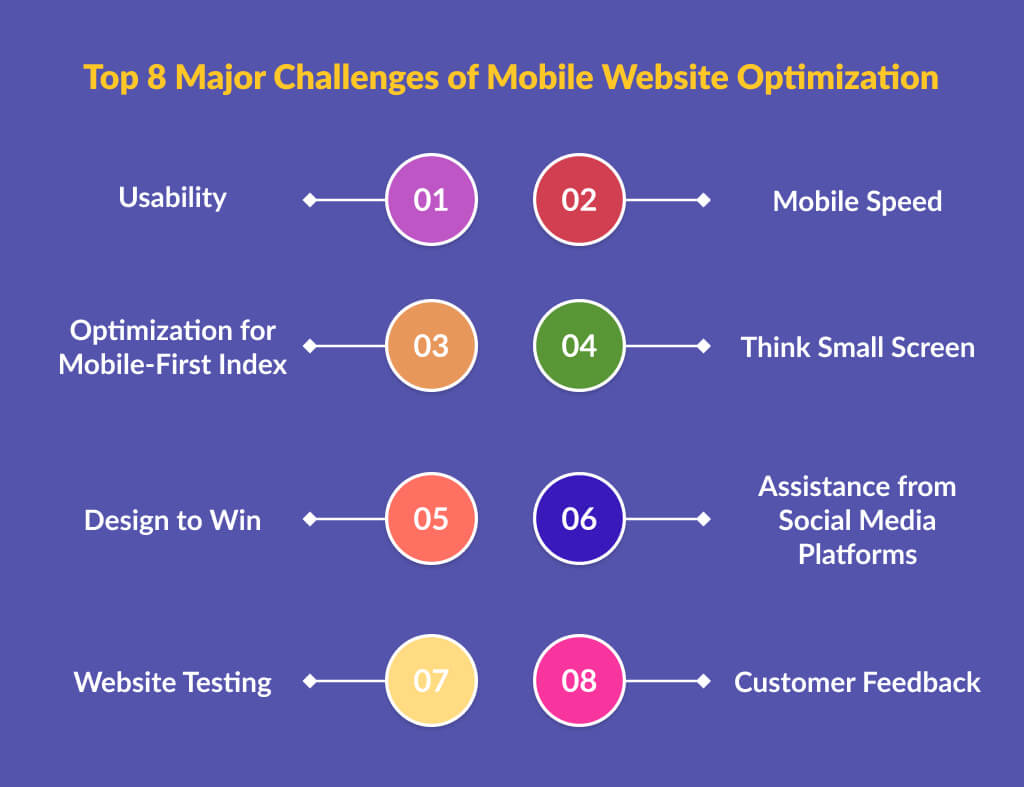Dominate Search Results with Next-Level Mobile Optimization Techniques
Wiki Article

The Ultimate Overview to Mobile Optimization: Methods for Enhancing Website Efficiency on Smartphones and Tablets
The approaches for boosting internet site efficiency on mobile systems go past simple adaptation; they encompass a comprehensive technique that entails receptive style, speed optimization, content techniques, and user experience enhancements. By diving right into the ins and outs of mobile optimization, organizations can not only meet customer assumptions yet likewise stay in advance in a competitive digital landscape.Significance of Mobile Optimization
Mobile optimization plays a pivotal duty in improving customer experience and driving conversion rates in the ever-evolving digital landscape. With the raising use smartphones and tablets for surfing the web, guaranteeing that websites are maximized for mobile phones has become crucial for businesses - Mobile Optimization. A mobile-optimized web site not just adjusts effortlessly to various screen sizes but likewise tons promptly, supplying customers with a smooth and pleasurable surfing experienceIn today's busy world, individuals anticipate immediate accessibility to information on the move. A website that is not enhanced for mobile devices threats losing possible consumers because of reduce loading times or an inadequate interface. By investing in mobile optimization, businesses can deal with the needs of their mobile audience, causing greater engagement and raised conversions.
Furthermore, internet search engine like Google prioritize mobile-friendly web sites in their rankings, making mobile optimization crucial for improving exposure and drawing in natural web traffic. Mobile Optimization. On the whole, the importance of mobile optimization can not be overstated, as it directly influences user complete satisfaction, conversion prices, and total business success in the electronic world
Responsive Style Strategies
Executing responsive design techniques ensures that web sites dynamically change their format and content based on the customer's tool display dimension, supplying a constant customer experience across numerous systems. One of the most common techniques utilized in receptive design is developing fluid grids that permit material to resize proportionally to the screen size. This ensures that aspects on the website keep their relative spacing and plan, enhancing the viewing experience for users on various devices.In addition, making use of adaptable images that can scale with the dimension of the viewport helps avoid photos from being cropped or misshaped on smaller sized displays. CSS media queries play a vital role in receptive layout by allowing designers to use certain designs based upon the gadget features such as screen size, height, and orientation. By leveraging media inquiries, websites can adjust their design and design to fit smartphones, tablets, and desktop computer screens perfectly.
Incorporating responsive design methods not just boosts customer experience but also contributes to enhanced online search engine rankings, as online search engine like Google focus on mobile-friendly sites in their mobile search engine result. By embracing responsive style, internet sites can provide to the diverse requirements of individuals accessing material on a variety Related Site of gadgets, inevitably driving engagement and conversions.
Rate and Efficiency Optimization

One secret strategy is enhancing images and multimedia material to lower documents sizes without jeopardizing high quality. Compressing pictures, leveraging contemporary image formats like WebP, and careless loading offscreen images work techniques to accelerate load times (Mobile Optimization). Furthermore, minimizing HTTP demands, leveraging web browser caching, and minimizing server response times are crucial steps in boosting efficiency.
Executing a content delivery network (CDN) can additionally considerably increase site speed by my site distributing content across numerous servers globally, decreasing latency for individuals accessing the site from various places. Prioritizing important above-the-fold material and delaying non-essential scripts can even more boost viewed performance. By concentrating on rate and check it out efficiency optimization, websites can provide a seamless and gratifying customer experience on smart phones.
Mobile-Friendly Web Content Strategies
Mobile-friendly web content techniques include customizing the presentation of information to fit the smaller sized displays and on-the-go nature of smart device and tablet computer customers. Furthermore, breaking up content right into much shorter paragraphs and using bullet factors can aid boost readability and make it much easier for customers to eat information quickly.Incorporating interesting visuals, such as images and video clips optimized for mobile viewing, can likewise improve the general individual experience. These visuals ought to matter, premium, and lots swiftly to avoid users from wearying. Furthermore, incorporating interactive components like tests, surveys, or studies can improve customer involvement and urge active involvement.
User Experience Enhancements
Building on the foundation of mobile-friendly material strategies, enhancing user experience entails maximizing every touchpoint to guarantee seamless communication and contentment for mobile individuals. One important aspect of improving user experience on mobile phones is making sure quickly packing times. Customers anticipate internet sites to fill swiftly on their mobile phones and tablet computers, and any type of delays can result in disappointment and increased bounce prices. Carrying out responsive style is another crucial factor in improving individual experience. Responsive design ensures that sites adapt to various screen sizes and resolutions, offering a regular and user-friendly experience across different tools.In enhancement to speed and receptive layout, streamlining navigating is vital for a favorable individual experience. Clear and intuitive navigating food selections, prominent search bars, and strategically positioned call-to-action buttons can aid individuals conveniently locate what they are seeking on a mobile website. Maximizing types for mobile users by reducing the number of areas and making use of auto-fill functions can likewise improve the general user experience. By focusing on these customer experience improvements, internet sites can successfully engage and maintain mobile visitors.
Conclusion
In conclusion, mobile optimization is critical for improving site performance on smart devices and tablet computers. By implementing receptive design techniques, maximizing speed and efficiency, producing mobile-friendly web content, and improving user experience, organizations can successfully get to and engage with their mobile target market. It is necessary for sites to adjust to the enhancing mobile use trends in order to remain affordable in the digital landscape.Report this wiki page